Wall of Mirrors Decor Ideas: How to Reflect Style, Light, and Personality
Key Takeaways
- A wall of mirrors adds depth, light, and sophistication when balanced with scale and proportion.
- Mixing mirror shapes, sizes, and frames creates visual rhythm and softness.
- Mirrors pair beautifully with textured art like Mixtiles' photo tiles for contrast and warmth.
- Placement and reflection matter most—design for what your mirrors see, not just where they hang.
A mirror wall isn’t just decoration—it’s architecture in disguise. Done well, it elongates a hallway, doubles a living room, or turns a quiet corner into a feature worth pausing for. But here’s the trick: it’s not about covering every inch in glass. It’s about curating reflection, choosing what your mirror captures, and framing it like art.
In this guide, we’ll walk through creative wall mirror decor ideas—from symmetrical salon-style layouts to mixed-media compositions that combine mirrors with artwork, sconces, and even photo tiles. Think of it as the difference between looking at your walls and designing with them.
Explore Mixtiles’ picture tiles—the perfect companion to mirror walls, adding softness, color, and story without nails or hassle.inspiration into a gallery that sticks (and unsticks) without drama.
What makes a wall of mirrors such a powerful decor idea?
A wall of mirrors transforms light and space, creating instant depth without structural change. Designers love mirrors because they amplify a room’s best features, which includes light, symmetry, and texture.
Illusion of space and natural light

Mirrors are the ultimate space illusionists. Placed opposite a window or light source, they reflect brightness back into the room, making even compact spaces feel expansive. The key is alignment—what your mirror reflects is as important as where it hangs.
Balancing symmetry and proportion
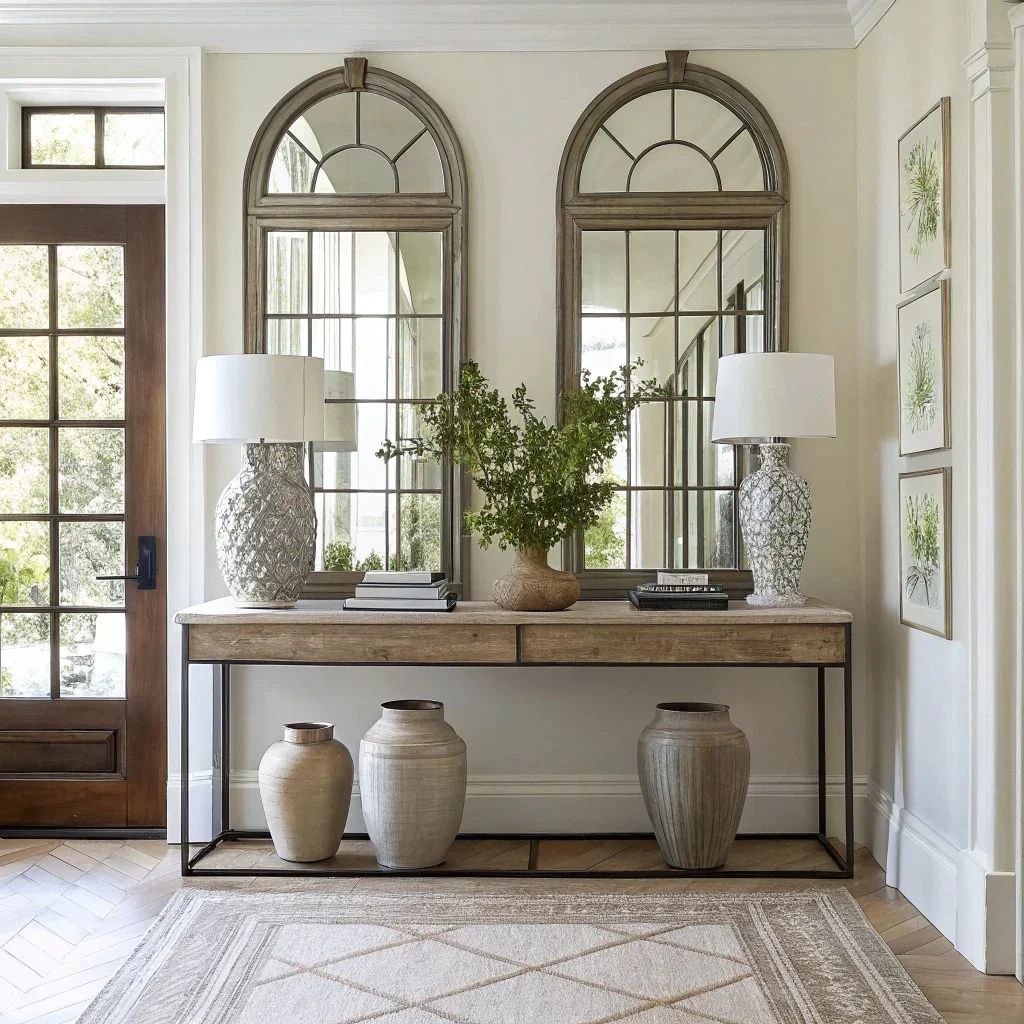
When used as a series, mirrors act like architectural panels. A grid layout feels crisp and structured; an asymmetrical composition feels relaxed and collected. Don’t ever hang them too high. Consider keeping reflections at eye level for a natural, inviting feel.
Quick Tip: Align mirror tops with nearby art or shelves to maintain visual flow.
Mirrors as artwork: shapes, frames, and finishes

Mirrors don’t have to blend in—they can star as the main act. Round mirrors soften angular rooms, arched mirrors elongate, and vintage frames add personality. For a layered look, mix framed mirrors with Mixtiles’ custom canvas prints or textured art.
How can I style a mirror wall in different rooms?
A mirror wall works differently in every space. It’s all about purpose, placement, and mood. Here’s how designers tailor their use of reflection room by room.
Living room mirror wall ideas: grand and conversational
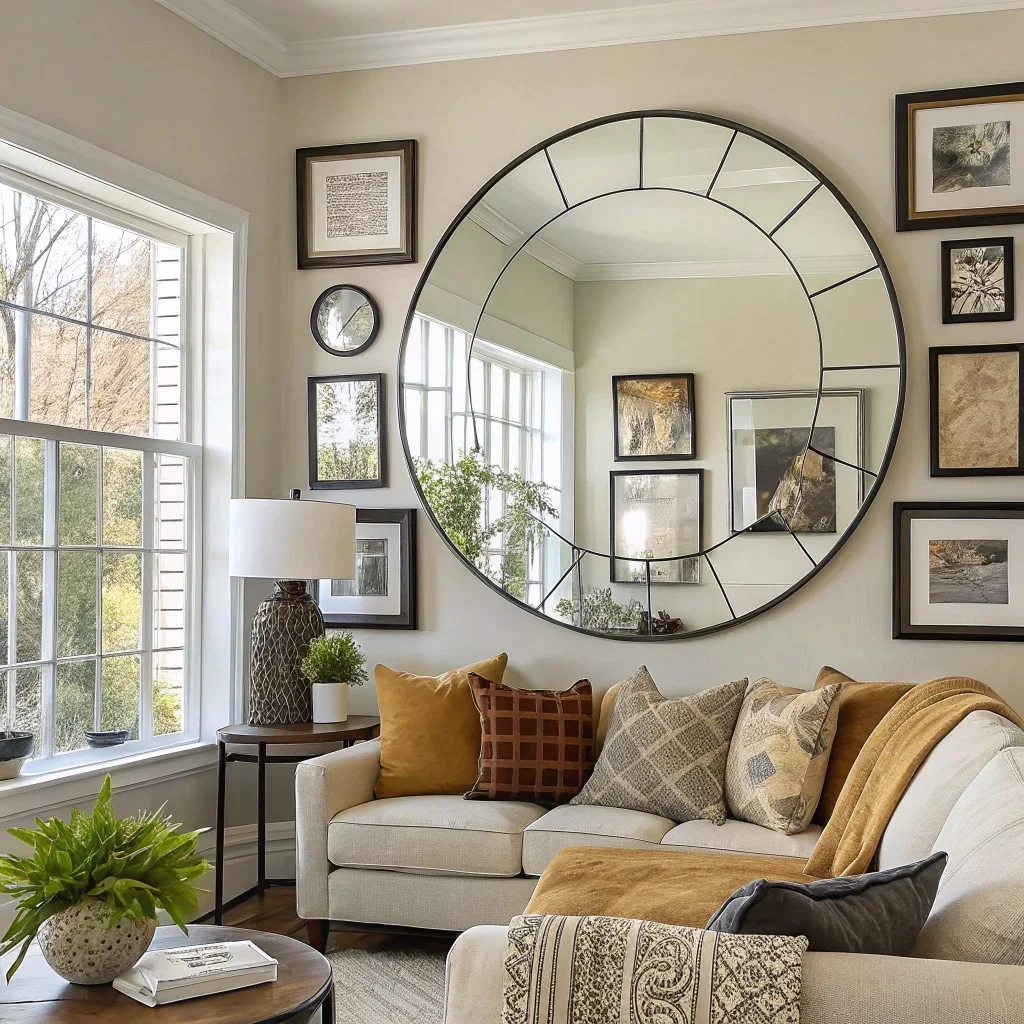

In a living room, mirrors create focus and dialogue. Use one large statement mirror above a fireplace or layer multiple mirrors behind a sofa to reflect light and movement. Mix them with 8x8 canvas prints for balance: one adds shimmer, the other adds soul.
Bedroom mirror decor: soft and reflective

In bedrooms, mirrors should whisper, not shout. Opt for framed mirrors in warm tones or antique glass for a forgiving, dreamy reflection. Hang them opposite soft textures—linen curtains, upholstered headboards—to create a cozy rhythm.
Quick Tip: Keep mirrors from reflecting the bed directly if you prefer a calm, grounded atmosphere.
Entryway and hallway mirror ideas: elongate and welcome

Entryways thrive on energy and light. A wall of mirrors here sets the tone the moment you walk in. Try vertical panels or staggered ovals to elongate narrow halls, and add a touch of personality with personalized canvas prints or art in between.
Bathroom mirrors beyond the vanity: layering reflections
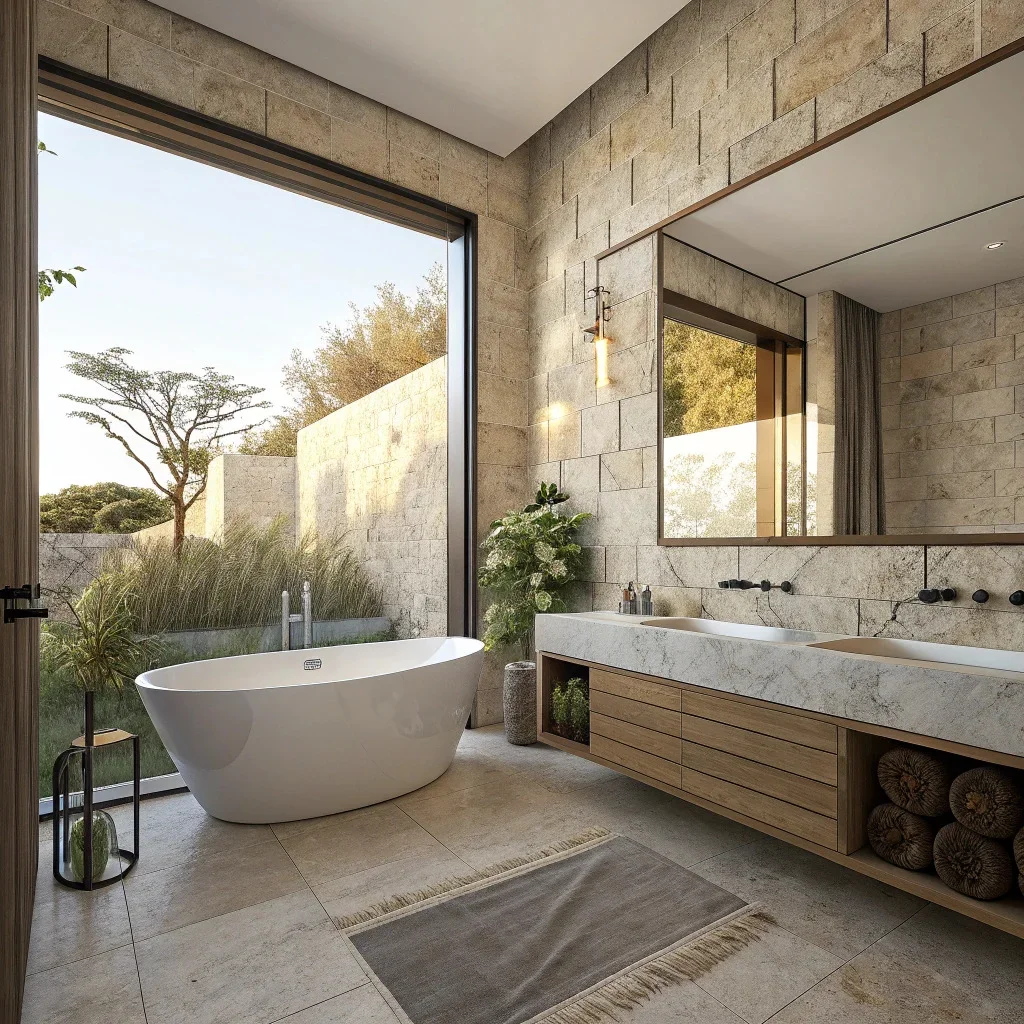
Mirrors aren’t limited to the sink. A mirrored accent wall behind a bathtub or adjacent to a window captures natural light beautifully. Pair it with artwork that won’t mind humidity, like Mixtiles’ easy-to-mount wall photo tiles to layer art and reflection seamlessly.
What are creative wall mirror decor ideas beyond traditional layouts?
Designers are rethinking mirror walls as dynamic compositions, not static grids. You can play with shape, spacing, and material to build something far more interesting than a plain reflection.
Clustered mirrors with varied shapes and sizes
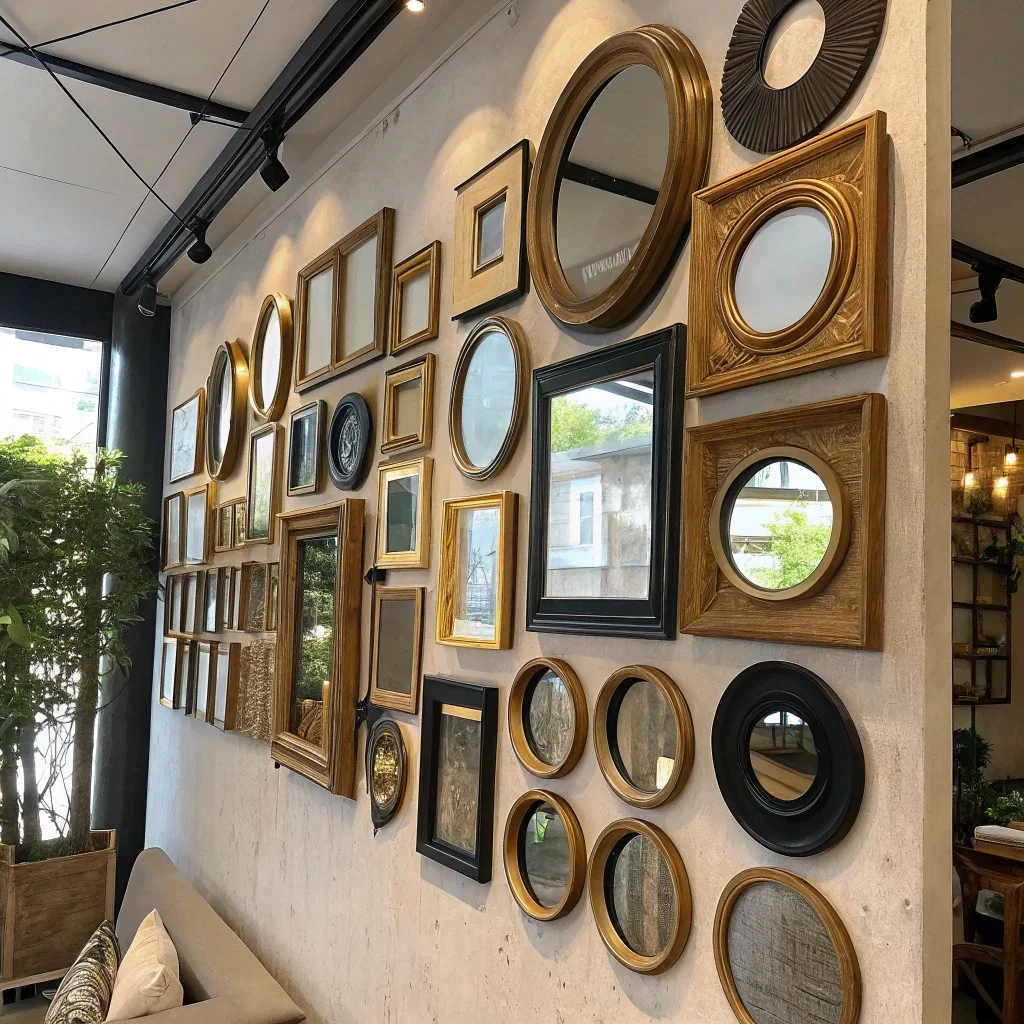
Clustered layouts feel collected and organic. Mix circles, arches, and squares for an artful, nonchalant effect. It’s an approach that reads “designer” without feeling staged.
Architectural paneling with mirror insets
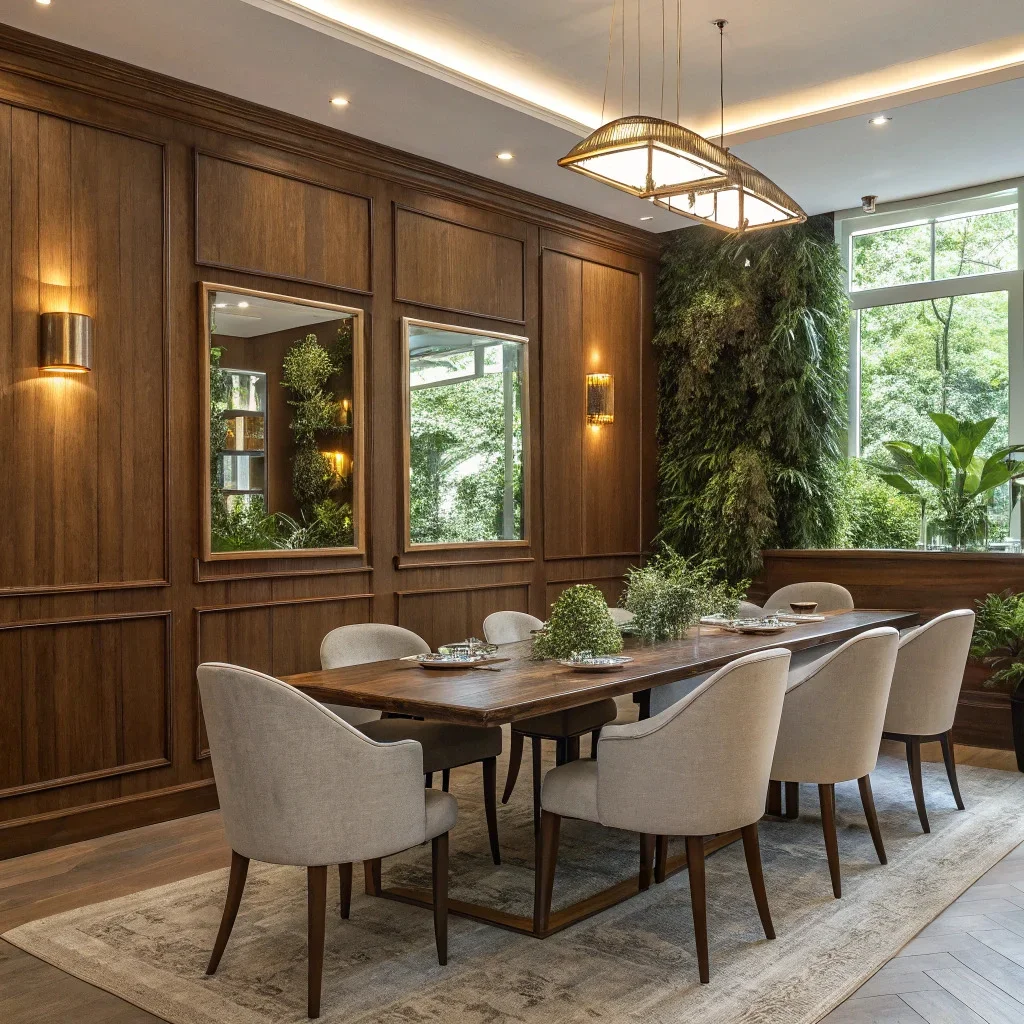
Paneling and mirrors are a match made in heaven. Mirrored insets within wood or plaster frames add structure while keeping the reflection subtle. Ideal for dining rooms or hallways that need a touch of drama without overwhelm.
Quick Tip: Use matte finishes around mirrors to keep glare under control.
Mirrors combined with artwork and shelving
Why choose between art and mirrors when you can have both? Mix reflective surfaces with open shelving, framed prints, or Mixtiles wall arts for texture and balance. The interplay of reflection and detail creates dimensions that static walls can’t match.
Not too sure where to start? You'll find a useful table below to boost your creative side:
|
Layout |
Best For |
Design Effect |
|
Grid or Panelled |
Formal rooms |
Symmetry and polish |
|
Clustered Mix |
Living spaces |
Organic flow, visual interest |
|
Mirror + Art Combo |
Transitional areas |
Depth, personality, contrast |
Combine picture tiles with mirrors to create walls that tell stories and shift with the light—reflections that truly move with you.
How do I choose the right mirror size, frame, and placement?
Choosing mirrors is a matter of proportion, reflection, and rhythm. The right scale and frame can define the room without overpowering it.
Scale and proportion
A mirror should cover at least two-thirds the width of the furniture it hangs above. Oversized mirrors make ceilings feel taller and rooms larger—while small mirrors can look lost in big spaces.
Frame Finishes and Materials
Frame choice sets tone: wood adds warmth, metal adds polish, and frameless designs keep things airy. Consider matching your mirror’s tone to other finishes in the room for harmony.
Placement and Reflection
Before hanging, stand where your mirror will be and look into it. Does it reflect something beautiful—a window, artwork, greenery? If not, adjust. Good mirror placement is as much about perspective as position.
Quick Tip: Always ensure mirrors reflect light or art, and never clutter.
How to mix mirrors with other wall decor elements
Mirrors shine brightest when paired with contrast. Their reflective quality thrives beside texture, color, and pattern.
Pairing mirrors with art or photo tiles for visual rhythm
Balance glossy reflection with matte softness. Mixtiles’ photo gallery wall complements mirrors perfectly—they ground the look with warmth and personality while keeping walls dynamic and easy to change.
Layering textures with glass, wood, and metal harmony
A wall that plays with materials feels curated. Layer mirrors beside wooden frames, woven panels, or brushed brass accents to strike the perfect balance between shimmer and substance.
Avoiding visual clutter for harmonious spacing and breathing room
Similarly to the installation of gallery walls, mirrors need space to shine. Maintain 2–3 inches between frames for a clean look that reads as intentional design rather than collage chaos. We’ve provided below a table to help guide you with your decision. This will depend on your desired effect and prominent materials that you have at home:
|
Mirror + Material |
Effect |
Best Room Use |
|
Mirror + Wood |
Warmth & texture |
Living rooms, bedrooms |
|
Mirror + Metal |
Sleek & modern |
Bathrooms, hallways |
|
Mirror + Photo Tiles |
Balanced & personal |
Family rooms, entryways |
Mirrors don’t just reflect your space; they can define it. From grand grids to intimate clusters, mirror walls transform rooms into living, breathing works of design. When balanced with artwork, texture, and light, they invite movement and emotion into every glance.
Design your own reflective story wall—combine Mixtiles wall arts with mirrors to create a space that glows, grows, and feels uniquely yours.
Frequently Asked Questions
How do I decorate a wall with multiple mirrors?
Start with one focal point—like a large round mirror—and build out symmetrically or organically with smaller mirrors. Keep spacing consistent and reflections intentional.
What kind of mirrors make a room look bigger?
Large mirrors or mirrored panels expand space visually. Choose frameless or minimal-frame mirrors for a seamless, continuous effect.
How high should I hang mirrors on a wall?
Center your mirror at about 57 inches from the floor—eye level for most people. Adjust slightly for furniture height.
Can I mix mirror shapes and styles together?
Absolutely. Mixing is what gives mirror walls character. Maintain a unifying element—like frame tone or spacing—to avoid visual chaos.
Do mirrors work in dark rooms?
Yes, especially when paired with warm lighting or artwork. Reflective surfaces help distribute light and lift shadows beautifully.


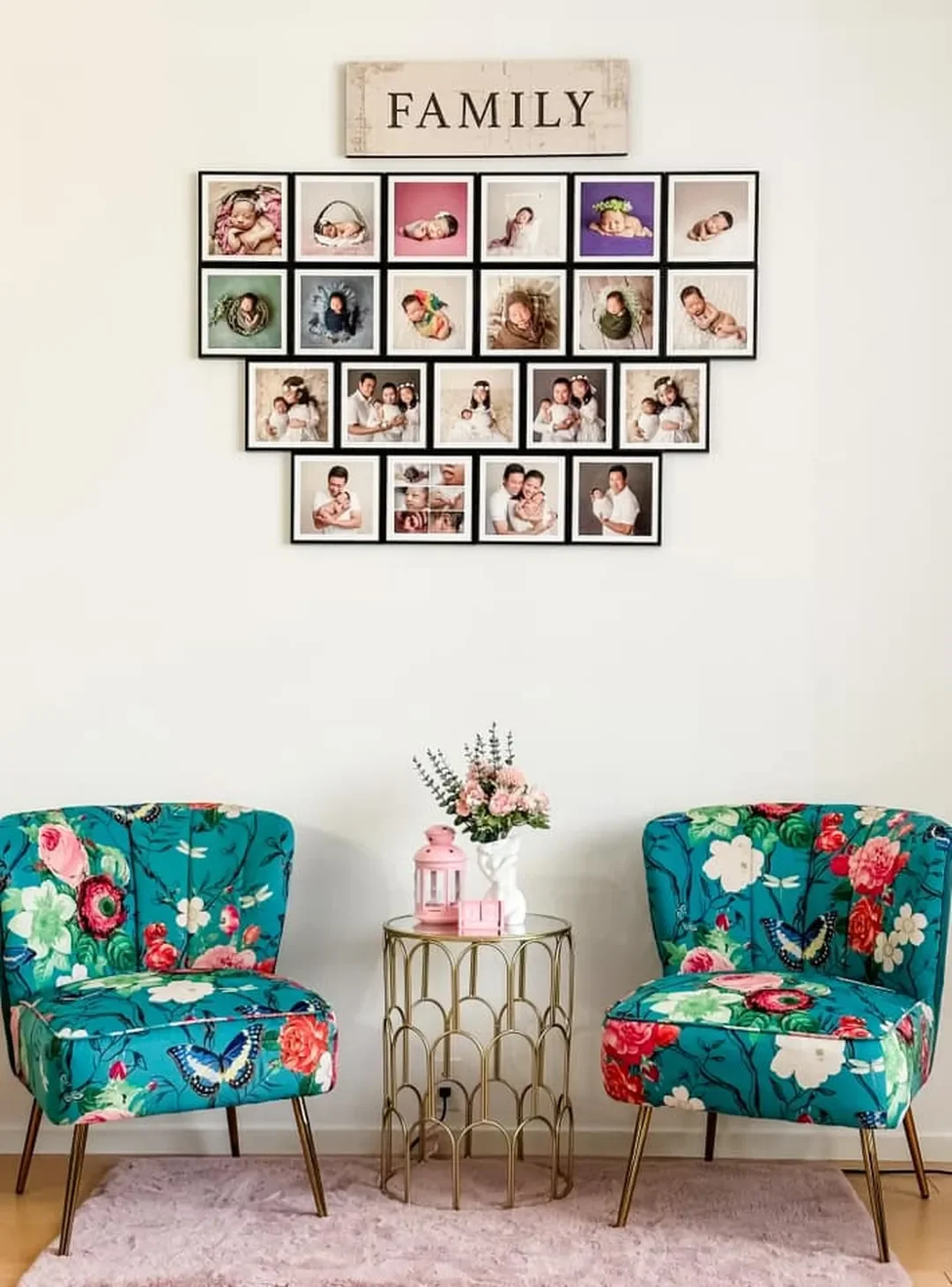
Be first to know — deals, news & decor ideas.
By clicking you agree to the Terms of Use & Privacy Policy
